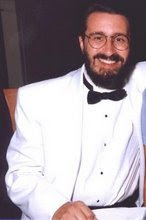
Look close at the picture and see if you can guess what it is. These vegetables do not grow in New England, but we can buy them in the market. If you can not figure if out click here.
When we got to Monterey we drove over to the 17 mile drive. This is a coastal toll road that is owned by the Pebble Beach Golf Course. It is really nice, it winds along the coast offering some great views of turbulent waves crashing the coast.

There is one point on the drive called Fanshell Overlook, where there is a stretch of white sand beach which attracts harbor seals. We saw a whole bunch sunning themselves on the rocks and swimming around in the ocean. The road soon begins to wind upwards along the coast an through cypress groves... we saw the Lone Cypress... the landmark image of Pebble Beach.

After we left the 17 Mile drive we drove across to to visit the Monterey Aquarium. It was about four in the afternoon , and the aquarium closes at six , so we only had about two hours in the Aquarium but it was really well worth the time. The central tank features not only many varieties of fish but it also has a giant kelp forest. They have an Otter exhibit, they are very cute! There are several touch tanks... one of which features Bat Rays, I have never touched a Bat ray before... it was cool.
So in the evening we visited Cannery Row and Fisherman's Wharf, nice little gifts shops and great fresh seafood.













